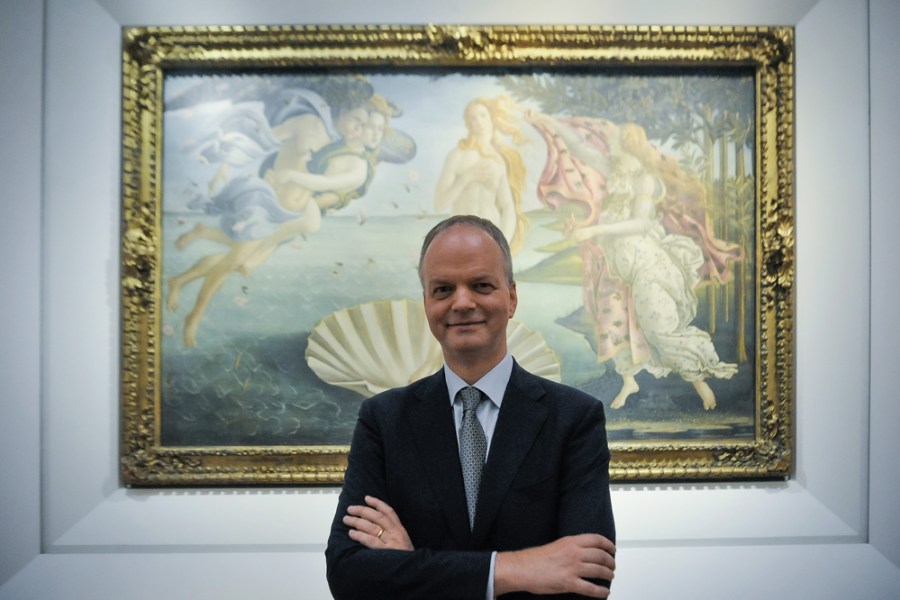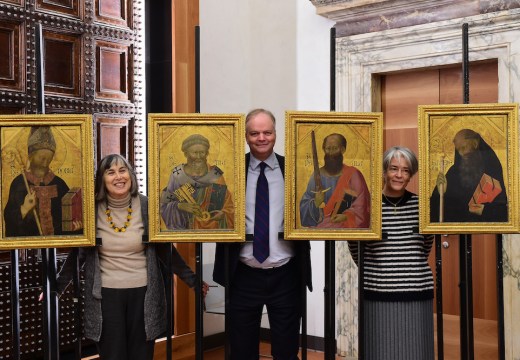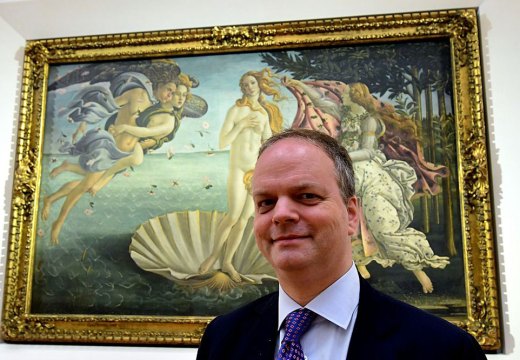Eike Schmidt, the former director of the Uffizi in Florence, has announced that he will be standing to be mayor of the city. The German-born art historian was appointed director of the Capodimonte in Naples last December, after eight years at the head of the Uffizi. Rumours that Schmidt was planning to run for office arose last year, and followed several years of tension between Schmidt and the incumbent mayor Dario Nardella, who is approaching the end of his second five-year term. More recently, Schmidt has said that Florence has ‘grown worse in recent years, in cleanliness and safety’. At an impromptu press conference on Saturday 6 April – in front of the Palazzo Vecchio, which contains the mayor’s office – Schmidt listed a litany of problems he believes are facing the city. The announcement of his plan to stand in the June elections has been received warmly by conservative politicians, including the current culture minister Gennaro Sangiuliano, who was appointed by far-right prime minister Giorgia Meloni in 2022. Schmidt was appointed to the directorship of the Uffizi in 2015 as part of centre-left former culture minister Dario Franceschini’s efforts to make Italy’s museum sector more international. Schmidt became an Italian citizen last November. | For more about Italian museum directors and the sector’s staffing problems, see Catherine Bennett’s report in the February 2024 issue of Apollo.
The Guardian reports that Christie’s has withdrawn four ancient Greek vases from auction after it emerged that the items were linked to Gianfranco Becchina, a dealer who was convicted of antiquities trafficking in 2011. The objects had been expected to be auctioned on 9 April in New York, but the four lots were removed after Christos Tsirogiannis, an expert in looted artefacts and trafficking, informed the auction house that the objects were connected to Becchina. Three of the items – an Attic cup, the lid of a bowl decorated with sphinxes, and a water pot depicting Dionysus, all dating from the 6th century BC – had been previously sold by Christie’s at an auction in 1979, after Becchina had consigned them to the auction house. Tsirogiannis, who is head of the Illicit Antiquities Trafficking Working Group of the UNESCO Chair on Threats to Cultural Heritage, claims that the auction house ‘excluded’ the fact that it had previously acquired the items from the dealer. The fourth withdrawn item, an oil jar depicting Theseus, was from the Athenian pottery collection of Manfred Zimmermann, who acquired it in the early 1990s. (Documentary evidence in the possession of Italian police suggests that Becchina acquired the jar in 1990. Tsirogiannis claims he received it in turn from another dealer Raffaele Monticelli, who was convicted of antiquities trafficking in 2002.) A spokesperson for Christie’s said, ‘Christie’s takes the subject of provenance research very seriously, especially when it relates to cultural property […] Any suggestion that Christie’s knew these objects originated with Gianfranco Becchina is categorically false.’
Several well-preserved frescoes have been discovered in Pompeii. Decorating an ancient banquet room, the murals depict characters from Greek mythology, including Helen of Troy and Paris, who is accompanied by a white hound. Another fresco depicts the attempts of the god Apollo to seduce the priestess Cassandra. The artworks have been found in a 15-by-six-metre chamber, which has been dubbed ‘the Black Room’ for its darkly coloured walls. Gabriel Zuchtriegel, director of Pompeii’s archaeological park, points to the ‘high degree of care for detail, expression and shadows’ evident in the work. Dating from between 15 BC and 50 AD, the frescoes have been identified as ‘third style’, also known as ‘ornate style’ – a period of painting that saw wall decorators move away from a reliance on trompe l’oeil and architectural stylings and towards miniature designs against monochromatic backgrounds.
Staff at National Museums Liverpool have resolved to continue striking into the summer months. Seven museums in the city have been closed since 17 February, when staff went on strike over a cost-of-living payment they claim they are owed. Museum staff will return to work on Monday 15 April, when the current eight-week strike action is due to end, but the Public and Commercial Services Union (PCS) has announced another 30 days of strike action between 15 April and 21 July. These strikes are scheduled to take place on weekends, including the May bank holiday, and over the half-term week at the end of May. They coincide with the opening of exhibitions at World Museum and the Walker Art Gallery. The strike is the lengthiest industrial action PCS has ever coordinated. PCS claims that National Museums Liverpool (NML) is ‘the only employer out of over 200 covered by the civil service pay remit guidance to withhold the £1,500 cost-of-living payment’. Last week, NML staff rejected the museum group’s final offer of a £750 payment plus additional holidays. PCS members employed by the British Museum had planned to go on strike last July, but called off the action after the museum agreed to the £1,500 payment.














![Masterpiece [Re]discovery 2022. Photo: Ben Fisher Photography, courtesy of Masterpiece London](http://www.apollo-magazine.com/wp-content/uploads/2022/07/MPL2022_4263.jpg)






